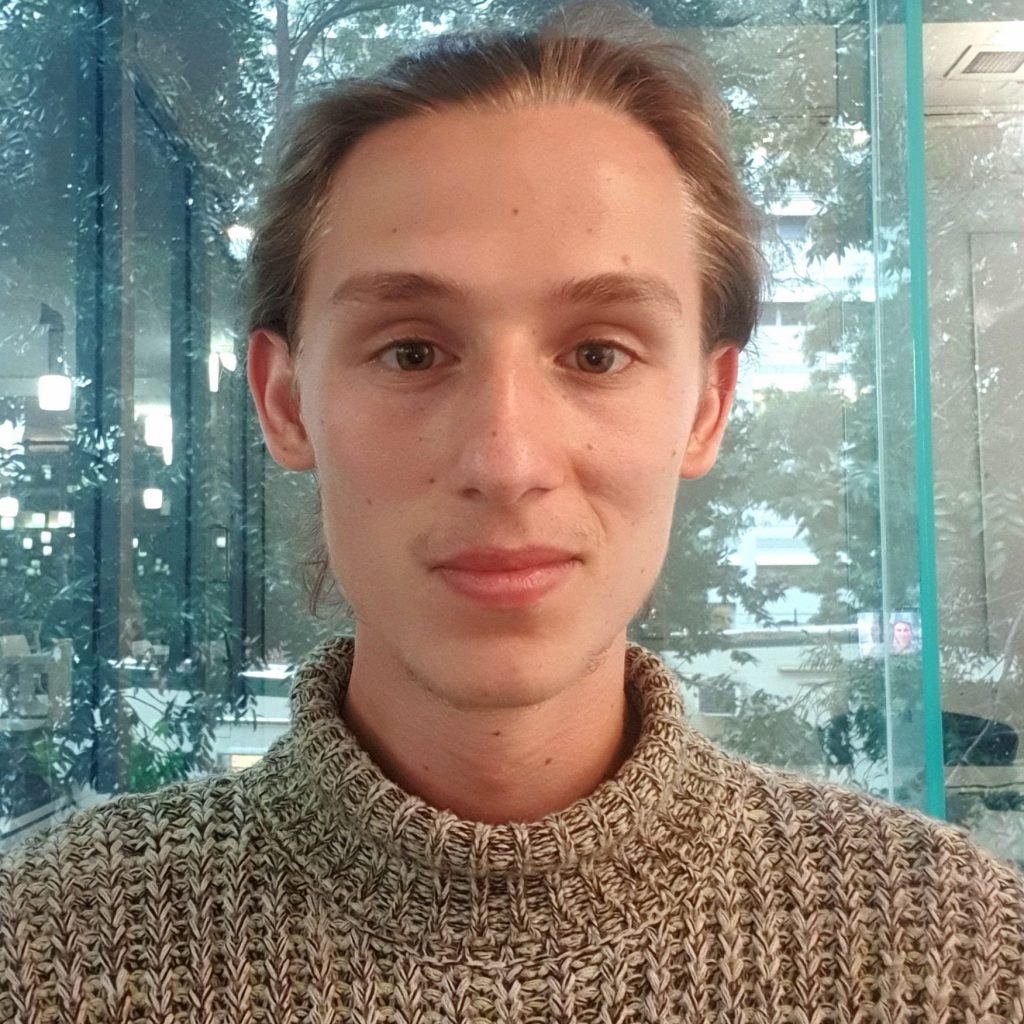The box-ball system is a discrete dynamical system composed of a finite number of balls in an infinite line of boxes. The goal of our research was to generalise this box-ball system to something called the super box-ball system and define solitons within this generalised system. We were successful in describing this new system and defined two specific cases in which solitonic behaviour occurs.
Picture this: it’s a brisk August morning in the old Scottish city of Glasgow. You have positioned your canal boat the night before, and upon arriving to the canals see that it is floating on the frigid water just as you left it. You fasten the bridle of two horses to the boat’s bow. You step into the boat. Upon your command the horses to gallop off, dragging yourself and the boat along the canal at a rapid pace. The water gathers around the boat’s bow, forming a wave. Upon your next command the horses abruptly stop, the boat jerks to a stop but the wave continues. You see it rise about the bow and in a moment of violent agitation moves forward as a large, well-defined wave. It continues to travel unchanging for many meters ahead in the canal.
This process may seem unconventional, but it is the exact experiment John Scott Russell performed in the mid-19th century. He called this phenomenon a ‘Wave of Translation’, and went on to do further experiments to explore its characteristics. Despite how fun it must have been to be dragged along in a canal boat by two horses, it was less than efficient, so he performed these experiments in a more controlled environment – a series of wave tanks. He discovered these waves of translation maintained their shape under collision and moved with speed proportional to their amplitude.
You might ask how these waves of translation relate to something called the box-ball system? Boxes and balls have little to do with water waves or anything of the like. There happens to be an equation, called the Korteweg—de Vries (KdV) equation, that explains how water waves move through narrow channels. Moreover, it has been found the solution to this equation corresponds to these waves of translation, also called solitons, discovered by John Russell. Now we might ask, is there a discrete version of this equation? It so happens that there is. When we take a specific limit of the KdV equation we obtain what we call the box-ball system.
The box-ball system is a discrete dynamical system composed of a finite number of balls in an infinite line of boxes. An algorithm is given for how these balls propagate along this line of boxes. The leftmost ball is placed in the nearest right empty box such that every ball is only moved once. Observing this system, we find that groups of balls move with speed corresponding to their number and maintain shape under collision. Astonishingly, we have found the discrete analogue to the KdV soliton solutions.
The goal of our research was to generalise this box-ball system to something called the super box-ball system and define solitons within this generalised system. In this new system, balls are represented by columns of values and propagation is described by something called the R-matrix. In summary, we were successful in describing this new system and defined two specific cases in which solitonic behaviour occurs.
Benjamin Solomon
The University of Queensland

